 The Kerman province is home to ethnic Persians, the absolute majority of whom were forced to convert to Shi’ism during the anti-Sunni Iranian Safavid reign. Today a minority (mainly Iranian Baloch) are Sunni in the Kerman province.
The Kerman province is home to ethnic Persians, the absolute majority of whom were forced to convert to Shi’ism during the anti-Sunni Iranian Safavid reign. Today a minority (mainly Iranian Baloch) are Sunni in the Kerman province.
The Iranian Island of Qeshm: The largest Island In The Persian Gulf and Sunni
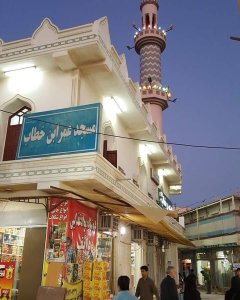
Omar b. al-Khattab (may Allah be pleased with him) mosque in Qeshm island.
Qeshm is very near to the coast of Oman (60km away) and the United Arab Emirates (UAE – 180km away). It is the biggest island in the Persian Gulf. Qeshm is located at the mouth of the strategically important Strait of Hormuz in the east of the Arabian Gulf, the island has a land area of 1,500 sq km and is twice the size of Bahrain. Known in the native Arabic dialect as Jazirat al-Ṭawilah, which translates as “Long Island”.
Except in some small villages in Oman, the traditional Persian Gulf culture has practically disappeared. In Qatar, the United Arab Emirates, Bahrain, and Saudi Arabia, the locals have moved to the main cities, and the very few places where you can see a small spillover of this culture are inhabited by Pakistani and Indian immigrants instead, so it is not very authentic.
Shah Ismail used to drink wine instead of Water
شاه اسماعیل با اينكه مروّج مذهب شيعه اماميه بود، در جاى آب شراب می آشاميد و هميشه ندماء مجلس او زنان و پسران خوش منظر بودند. در محرّم فقط در روز عاشورا مجلس عزايى منعقد كرده، يكى از وعاظ كتاب روضة الشهداء حسين واعظ كاشفى را بر منبر مى خواند. سامعين ندبه و گريه مى كردند. چون اين كتاب فارسى بود، غالب امرا، حتى لشكر كه ترك بودند، نمى فهميدند. جلال الدين ميرزاى مرحوم در جلد ثالث نامه خسروان مى نگارد: كه در مجلس عزايى كه شاه اسماعيل حضور داشت، يكى از امراى بزرگ شاملو در آن مجلس بود و گريه مى كرد، شاه از او پرسيد كه تو چرا گريه مى كنى؟ در جواب عرض كرد كه “من از براى حسين شما گريه نمى كنم؛ از براى آن دليران شام ما گريه مى كنم كه حسين شما و اصحابش آنها را كشته اند. شاه كه اين جواب را شنيد، خنديد”
محمد عارف اسپناقچى پاشازاده، انقلاب الاسلام بين الخواص و العوام، به کوشش رسول جعفریان، قم، انتشارات دلیل ماه، چاپ نخست 1379، ص 271.
“[…] although Shah Isma’il adherent of the Shi’a Imamiyyah sect, yet he used to drink wine instead of water, and every time his gathering would consist of good looking woumen and young boys. During Muharram, only on the day of Ashura there would be mourning ritual. One would recite from the book “Raudhah al-Shuhada” by Hussein Wa’idh Kashifi on the pulpit (minbar). Listeners would wail and cry. Since this book was in Farsi, most of the generals and even the army who were Turks, couldn’t understand it. The Late Jalal al-Din Mirzai writes in the third volume of the letter of Khosrawan that in the mourning gathering (majlis) where Shah Ismail was present, one of the chief generals of Shamlou was also present and he would cry. Shah Ismail asked him why he was crying? He said in reply: “I am not crying for your Hussein, I am crying for the brave Shamis (Syrians) who were killed by your Hussein and his companions. When Shah Ismail heard this, he laughed.
Source: Mohammad Aref Epenaqchi Pashazadeh in his “Enqelab Islam bayn al-Khawas wa al-‘Awam”, with the effort of Rasoul Jafarian, Qom, Dalil Mah Publications, First Print 1379, Page 271″
Note: Historical chronicles about the Safavids also reveal that the Safavid rulers were very fond of young boys. Ironically, the Shi’a Mullahs of Iran to this very day have a reputation of being closet sodomites. The Feyziyyeh School of Qom (founded by the Safavids) is infamous for being cesspool of sodomy.

Nowruz – An integral part of Shi’ism [COLLECTION OF ARTICLES]
 The greatest and most venerated Eid celebrated in ‘the Islamic Republic of Iran’ is of course it’s not an Islamic one, rather it’s Nowruz (the greatest Eid and holiday in Zoroastrianism).
The greatest and most venerated Eid celebrated in ‘the Islamic Republic of Iran’ is of course it’s not an Islamic one, rather it’s Nowruz (the greatest Eid and holiday in Zoroastrianism).The History Of The Sunni Community Of Iṣfahān, Persia
Iṣfahān (Persian: اصفهان, romanized: Esfahān, historically also rendered in English as Ispahan, Spahan, Sepahan, Esfahan or Hispahan and known in classical Arabic as Aṣbahān/أصبهان) is the third-largest city in Iran after Tehran and Mashhad, but was once one of the largest cities in the world, it is one of the ancient Persian cities and is known in Persian as Nesf-e Jahan, “Half the World”.
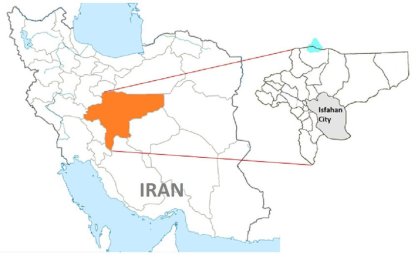
Iṣfahān was conquered at the end of year 20, during the reign of ‘Umar b. al-Khaṭṭāb (may Allah be pleased with him). Several reports mentioned that the Prophet’s (ﷺ) companion, Abū Mūsā al-Ash’arī (may Allah be pleased with him), took part in the conquest of the city. Other companions are cited as well.
Iṣfahān – like other major Persian Sunni cities – used to be one of the strongholds of Sunni Islam in Pre-Safavid Iran, it was a major source of Sunnī and ḥadīthist scholarship.

The Jāmeh Mosque of Isfahān or Jāme’ Mosque of Isfahān, also known as the Atiq Mosque (مسجد عتیق) and the Friday Mosque (مسجد جمعه), was the grand, congregational mosque (Jāmeh) of Isfahān city, within Isfahān Province, Iran. The mosque was built during the Umayyad dynasty. It is one of the oldest mosques still standing in Iran and one of the remnants of the Sunni heritage of Isfahan that has been vigorously violated by Twelver Shia rulers, starting with the (openly) anti-Sunni Shia Safavid dynasty (who desecrated the graves of Sunni scholars in Isfahan and beyond and removed the names of the Sahabah, particularly, Abu Bakr and ‘Umar from all ancient mosques) to the modern-day Khomeinist regime of Iran.
Sunni Regions of Iran In One Detailed Map
Here a very accurate map showing the Sunni areas in Iran.
What should be noted is that many Iranian Sunnis live in major Shia cities like Tehran, Isfahan Shiraz and even Mashad (that has a native Sunni minority of around 15%!). Also conversions from Shi’ism to Sunnism are very common among Ahwazi Arabs in the last few decades (a phenomenon even bitterly acknowledged by the Shia clergy and regime official more than once), so the Khuzestan province should be clustered with Sunnis, especially the western Arab part of it.
Persian Sunni scholars VS the King of the Safavids
 Most Iranians have been fooled into believing that the Safavid Dynasty was a Golden Age in Iran, a period that witnessed a cultural flowering under the charismatic Isma’il and and his son Tahmasp, the first two Shahs of the dynasty. Iran’s border were restored again and other romanticised half-truths. What most Iranians are not told (neither by the Shia clergy nor ultra-Iranian nationalits) is how the Turkic Safavids slaughtered thousands upon thousands of Persians (Sunnis), starting with the elite, the thinkers and scholars.
Most Iranians have been fooled into believing that the Safavid Dynasty was a Golden Age in Iran, a period that witnessed a cultural flowering under the charismatic Isma’il and and his son Tahmasp, the first two Shahs of the dynasty. Iran’s border were restored again and other romanticised half-truths. What most Iranians are not told (neither by the Shia clergy nor ultra-Iranian nationalits) is how the Turkic Safavids slaughtered thousands upon thousands of Persians (Sunnis), starting with the elite, the thinkers and scholars.
During the Safavid era, after the genocide of the Sunni population of Khorasan/Persia, Shah Ismail (the Safavid) arrested the Sunni Mufti of these lands: Maulana Taftazani (not to be confused with Sa’ad al-Din al-Taftazani), and urged him (Taftazani) to leave Sunnism and embrace Shi’ism. Taftazani gave a condition. He said that Shah Ismail should bring his Shia scholars, and if they can refute him (Taftazani) then he is ready to become a Shi’ite, but if he (Taftazani) refutes them, then they (including Shah Ismail) have to become Sunnis. Shah Ismail consulted with the Shia scholars but they refused and said: “There is no discussion with these people”. Thereupon Shah Ismail ordered the worst form of execution for Taftazani (and other Sunni scholars).
(‘Tarikh Rashidi’, page 367-368, by Mirza Mohammad Haidar)
This is why Mohammad Aref Espanagheshi (Iranian historian) writes: “Every Sunni scholar in those times (Safavid era) who challenged the Shia scholars for debates and discussion was facing execution. This is why some Sunni scholar kept silent (did not speak out) and other left the country.”
(‘Inqilab Al-Islam bain Al-Khawaas wa Al-Awaam’, page 48 by Mohammad Aref Espanagheshi)
Related article: https://sonsofsunnah.com/2013/11/13/iranian-shia-intellectual-questions-the-core-of-shiism-and-the-ayatollahs-go-nuts/
From Sufism to Shi’ism – The Rise of The bloodthirsty Safavids and the Massacre of Persian Sunnis
Since at least the mid-fifteenth century, the Safavid order, which was established by Shaykh Ṣafī al-Dīn of Ardabil (d. 1334) as an ostensibly Sufi tariqah (Sufi order), had become increasingly important as a political force in the territories of the Aqquyunlu in Iraq, Anatolia, and Azerbaijan. It was during the period when Shaykh Junayd ibn Ibrahīm (d. 1460) assumed leadership of the Safavid order that it became explicitly Shi’ite and closely affiliated with the more ghulati (extremist/heterodox) strands of Shi‘ism.
The Safavid Response to the Ottomans’ Congratulation: The Demolition of Graves and Slaughter of Persian Sunnis!
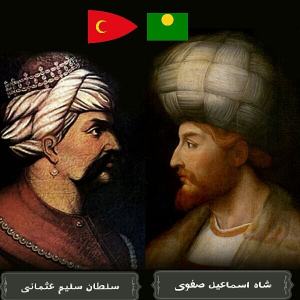 The Ottoman sultan, Bayezid II, in his message congratulated the first Safavid king (Shah) Isma’il on his victories and advised him to stop destroying the graves and mosques of Sunni Muslims. Shah Isma’il was convinced of the righteousness of his cause and the evil of Sunni Islam; he did ignore the request and later even massacred entire Persian towns that refused to accept Twelver Rafidi Shi’sim. The new sultan in Constantinople after 1512, Sultan Selim, warred against the extreme form of Twelver Rafidi Shi’ism that was enforced on the lands of Persia, he started killing 40,000 Shi‘is accused of being Kizilbash or Safavid agents, and imprisoned or deported thousands of others.
The Ottoman sultan, Bayezid II, in his message congratulated the first Safavid king (Shah) Isma’il on his victories and advised him to stop destroying the graves and mosques of Sunni Muslims. Shah Isma’il was convinced of the righteousness of his cause and the evil of Sunni Islam; he did ignore the request and later even massacred entire Persian towns that refused to accept Twelver Rafidi Shi’sim. The new sultan in Constantinople after 1512, Sultan Selim, warred against the extreme form of Twelver Rafidi Shi’ism that was enforced on the lands of Persia, he started killing 40,000 Shi‘is accused of being Kizilbash or Safavid agents, and imprisoned or deported thousands of others.
Sultan Selim waged war also against the Safavids. On 23 August 1514, just west of Tabriz in Chalderan plain, Shah Isma’il’s army suffered a crushing defeat, which its cavalry and infantry were armed with spears, bows and swords, fighting against Ottoman’s superior numbers as well as field artillery and musketeers. Shah Isma’il and his followers firmly believed that Allah was on their side, but they were confused by their military setback, Tabriz, their capital was briefly occupied. This battle and defeat of Safavid Shah paved the path for the Ottoman conquest of Diyarbakr, Erzinjan, and other parts of eastern Anatolia as well as northern Iraq. Shah Isma’il himself found relief from psychological depression in wine, and died ten years later, at the age of thirty-seven.
Reference: ‘The history of Shah Isma’il Safawi – The bringer of Shi’ism’ by the Iranian historian Amir Hussein Khonji
Sunni Growth In Iran | How many Sunnis live in Iran?
 People inside Iran, especially in the last two decades have realised how much more religious and conservative Iranian Sunnis are compared to their Shi’ite countrymen. This is based on numerous factors, one undoubtedly includes the widespread distrust and often dislike of the Shia clergy by a large number of Iranian Shi’ites, a phenomenon that is pretty much non-existing amongst Iranian Sunnis. On top of that there is the high fertility rate amongst Iranian Sunni that has caused Shi’ite hardliners in Iran to express their worries about worrying decline of the Shi’ite population of Iran and the steadily growing Sunni population (where birth rates are often more than double and thrice compared to the Shia population). Some Shia clerics even have openly called for government intervention to reduce (!) the number of Iranian Sunni by means such as not giving them passports.
People inside Iran, especially in the last two decades have realised how much more religious and conservative Iranian Sunnis are compared to their Shi’ite countrymen. This is based on numerous factors, one undoubtedly includes the widespread distrust and often dislike of the Shia clergy by a large number of Iranian Shi’ites, a phenomenon that is pretty much non-existing amongst Iranian Sunnis. On top of that there is the high fertility rate amongst Iranian Sunni that has caused Shi’ite hardliners in Iran to express their worries about worrying decline of the Shi’ite population of Iran and the steadily growing Sunni population (where birth rates are often more than double and thrice compared to the Shia population). Some Shia clerics even have openly called for government intervention to reduce (!) the number of Iranian Sunni by means such as not giving them passports.
Iranian Sunnis Pray For President Mursi
Sunnis of Tehran in one of the Namazkhanehs (converted prayer-houses, flats and halls that the regime and its mouthpieces sell as ‘Sunni Mosques in Tehran’ to the gullible) prayed Salah al-Ghayb (Absentee Funeral Prayer) for the Hafidh al-Qur’an, President Morsi (may Allah have mercy on him).
 May Allah have mercy on Abu Ahmad Mohamed Morsi and forgive his sins. As Iranian Sunnis we will never forget how he spoke in support of the Syrian people and praised the Sahabah in the capital of the Neo-Safawis, putting a smile on our faces.
May Allah have mercy on Abu Ahmad Mohamed Morsi and forgive his sins. As Iranian Sunnis we will never forget how he spoke in support of the Syrian people and praised the Sahabah in the capital of the Neo-Safawis, putting a smile on our faces.
Eid Mubarak -1440
Eid Mubarak from the Sunnis of Iran!
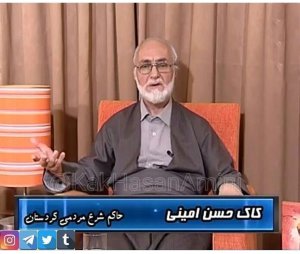

Kak Hassan Amini is the Mufti of Iranian Kurdistan (a man of dignity who has never sucked up to the regime unlike other Iranian ‘Sunni’ government stooges) and declared today, Tuesday, as the first day of Eid of 1440 as the moon was sighted in Kurdistan, thus openly rejecting the official regime position (few Iranian Sunni scholars dare to do so).
Shaykh al-Hadith Nematullah Tawhidi – A Caller to Tawhid in Shirkistan of Iran
 Shaikh al-Hadith Nematullah Tawhidi was a charismatic Iranian Sunni scholar from the Sistan and Baluchestan Province in south-east Iran. A teacher of one of the Sunni institutes in Zahedan city. He was known for his sharp mind and tongue and for his bravery as he openly defended Sunni beliefs without any comprise despite all the pressure from the Iranian regime and the Shia clergy. He also openly refuted Shia allegations (in defence of Sahaba, the mother of the believers ‘Aisha etc.) against Ahl al-Sunnah and warned against the veneration of saints and graves that are so common in Iran and were actively propagated by the regime and the Mullahs of Qom in Sunni regions of Iran. He surely lived up to his name, a man of monotheism, who lived by it and died upon it.
Shaikh al-Hadith Nematullah Tawhidi was a charismatic Iranian Sunni scholar from the Sistan and Baluchestan Province in south-east Iran. A teacher of one of the Sunni institutes in Zahedan city. He was known for his sharp mind and tongue and for his bravery as he openly defended Sunni beliefs without any comprise despite all the pressure from the Iranian regime and the Shia clergy. He also openly refuted Shia allegations (in defence of Sahaba, the mother of the believers ‘Aisha etc.) against Ahl al-Sunnah and warned against the veneration of saints and graves that are so common in Iran and were actively propagated by the regime and the Mullahs of Qom in Sunni regions of Iran. He surely lived up to his name, a man of monotheism, who lived by it and died upon it.
He, along with a group of other outspoken Iranian Sunni scholars died in a suspicious bus crash in year 1427H / 2006. His family members and witnesses suspect the Iranian regime (it got rid of many critics, especially Sunni scholars, in such staged ‘accidents’). He was only 38 years young.
May Allah have mercy on his soul.
Persian Sunnis?!
 Whether or not an ethnic Persian exists in the world is a topic where one will hear many opinions and arguments. Some (often Iranian nationalists) argue that the Persian-speakers of Iran are not an ethnic group but rather a lingual group (like most Arab speakers in the Arab world who although are culturally and linguistically Arab, yet very few can claim to be of pure Arab origin, although undoubtly many do have Arab ancestry).
Whether or not an ethnic Persian exists in the world is a topic where one will hear many opinions and arguments. Some (often Iranian nationalists) argue that the Persian-speakers of Iran are not an ethnic group but rather a lingual group (like most Arab speakers in the Arab world who although are culturally and linguistically Arab, yet very few can claim to be of pure Arab origin, although undoubtly many do have Arab ancestry).
Shaykh Abdul-Malik Mollazadeh – Assassinated by Khomeinists/Neo-Safavids
 The 5th of March (1996/1416) marks the day when Shaykh Abdul-Malik Mollazadeh (Iranian Baloch Sunni scholar) was assassinated by Iranian intelligence agents.
The 5th of March (1996/1416) marks the day when Shaykh Abdul-Malik Mollazadeh (Iranian Baloch Sunni scholar) was assassinated by Iranian intelligence agents.
The Shaykh was the son of the great scholar Shaykh Abdul-Aziz Mollazadeh (brother of Shaykh Dr. Abdul-Rahim Mollazadeh, known in the Arab world as Shaykh Abu Muntasir Al-Balushi) who was the most influential Sunni authority in Iran during the time of the Shah and beginning of the Khomeinist revolution.
Imam Ahmad ibn Hanbal and the Persian (Farsi) language
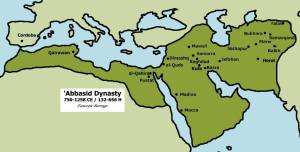 Imam Ahmad ibn Hanbal’s family was originally from Basra, Iraq, and belonged to the Arab Banu Shayban tribe. His father was an officer in the Abbasid army in (inhabited by Persians to this day) Khorasan and later settled with his family in Baghdad, where Ahmad was born in 780 CE. Ibn Hanbal had two wives and several children, including an older son, who later became a judge in Sunni (Pre-Safavid) Isfahan. What pretty much unknown, even to many students of knowledge, is that Imam Ahmad could speak fluently Persian!
Imam Ahmad ibn Hanbal’s family was originally from Basra, Iraq, and belonged to the Arab Banu Shayban tribe. His father was an officer in the Abbasid army in (inhabited by Persians to this day) Khorasan and later settled with his family in Baghdad, where Ahmad was born in 780 CE. Ibn Hanbal had two wives and several children, including an older son, who later became a judge in Sunni (Pre-Safavid) Isfahan. What pretty much unknown, even to many students of knowledge, is that Imam Ahmad could speak fluently Persian!Al-Layth ibn Sa’d the Persian (Laythi Madhab)
Al-Layt h Ibn Saʿd Ibn ʿAbd al-Raḥmān al-Fahmī al-Qalqashandī (الليث بن سعد بن عبد الرحمن الفهمي القلقشندي) was the chief representative, Imam, and eponym of the Laythi school of Islamic jurisprudence from Egypt and of Persian origin.
h Ibn Saʿd Ibn ʿAbd al-Raḥmān al-Fahmī al-Qalqashandī (الليث بن سعد بن عبد الرحمن الفهمي القلقشندي) was the chief representative, Imam, and eponym of the Laythi school of Islamic jurisprudence from Egypt and of Persian origin.
There is agreement on his Persian origin.
Muhammad Ibn Ahmad Ibn ‘Othman AL-DHAHABI (Al-Turkistani) says in his Siyar A’lam Al-Nubala`:
Imam from Ray (Tehran) – Imam Fakhr Al-Din Al-Razi
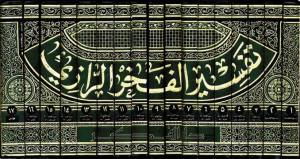 Imam Fakhr Al-Din Al-Razi (the Tehrani) Shafi’i Ash’ari scholar
Imam Fakhr Al-Din Al-Razi (the Tehrani) Shafi’i Ash’ari scholar
Abu Abdullah (also known as Abu Al-Fadhl) Muhammad ibn Omar ibn Al-Hussein Al-Taymi Al-Bakri Al-Tabaristani Fakhr al-Din al-Razi (Arabic:أبو عبدالله محمد بن عمر بن الحسن بن الحسين بن علي التيمي البكري فخرالدین الرازی ) was a Persian Sunni Muslim scholar (of Taymite Bakrite descent i.e. a descendant of Abu Bakr Al-Siddiq). His family were originally from northern Persia, Tabaristan (today known as Mazandaran) from the city of Amol.
The forgotten Persian Sunni Empire
Th e Samanid dynasty (Persian: سامانیان, Sāmāniyān), also known as the Samanid Empire (819–999). It was the first native Persian empire after Arabs ruled Persia for around 300 years. This first ever Persian empire after the Muslim conquest by Caliph ‘Omar Ibn Al-Khattab (may Allah be pleased with him) was not just Muslim but Sunni to the core. The Samanids ruled in Khorassan and Transoxiana. During the era of the Abbasids they ruled as Amirs of Khorasan, appointed by the Abbasid Caliph in Baghdad. The Samanids were of Persian dehqan origin with roots stemming from Balkh (to this day a majority Persian-Tajik area in Afghanistan) in present-day northern Afghanistan.They claimed descent from the House of Mihran, high nobility of the Sassanian and Parthian (ancient Khorassan) empires conquered by the Muslims.
e Samanid dynasty (Persian: سامانیان, Sāmāniyān), also known as the Samanid Empire (819–999). It was the first native Persian empire after Arabs ruled Persia for around 300 years. This first ever Persian empire after the Muslim conquest by Caliph ‘Omar Ibn Al-Khattab (may Allah be pleased with him) was not just Muslim but Sunni to the core. The Samanids ruled in Khorassan and Transoxiana. During the era of the Abbasids they ruled as Amirs of Khorasan, appointed by the Abbasid Caliph in Baghdad. The Samanids were of Persian dehqan origin with roots stemming from Balkh (to this day a majority Persian-Tajik area in Afghanistan) in present-day northern Afghanistan.They claimed descent from the House of Mihran, high nobility of the Sassanian and Parthian (ancient Khorassan) empires conquered by the Muslims.
A Persian Sunni poem in response to the enemies of the two Shaykhs
 Abū Ḥamīd bin Abū Bakr Ibrāhīm aka Attar Al-Nishaburi* (Nishabur lies in current day Iran, in the Khorasan province where ethnic Persian Khorassani Sunnis still represent a large minority, even in Mashad city) on one of the accusations of the Shia against the two noble Shaykhs (Abu Bakr and Omar):
Abū Ḥamīd bin Abū Bakr Ibrāhīm aka Attar Al-Nishaburi* (Nishabur lies in current day Iran, in the Khorasan province where ethnic Persian Khorassani Sunnis still represent a large minority, even in Mashad city) on one of the accusations of the Shia against the two noble Shaykhs (Abu Bakr and Omar):
در خلافت میل نیست ای بیخبر
میل کی آید ز بوبکر و عمر
میل اگر بودی در آن دو مقتدا
هر دو کردندی پسر را پیشوا
عطار نیشابوری
Translation:
Great Tabaristan – The land that used to produce beacons of Knowledge

A map of northern Iran, ancient Tabaristan.
Tabaristan, also known as Tapuria, was the name of the former historic region in the southern coasts of Caspian Sea roughly in the location of the northern and southern slopes of Elburz range in Iran. The region roughly corresponded to the modern Iranian provinces of Mazandaran, Gilan, Golestan, northern Semnan, and a little part of Turkmenistan.
The two Persian students of Ibn Abbas
 Our master Abdullah Ibn ‘Abbas had many famous students, among them many non-Arabs such as the leader of the Salaf, Sa’id Ibn Jubayr (of Habashi/Ethiopian origin), ‘Ikramah (Berber, North African origin) and ‘Ataa Ibn Abi Rabah (of Nubian/Sudani origin) and many others.
Our master Abdullah Ibn ‘Abbas had many famous students, among them many non-Arabs such as the leader of the Salaf, Sa’id Ibn Jubayr (of Habashi/Ethiopian origin), ‘Ikramah (Berber, North African origin) and ‘Ataa Ibn Abi Rabah (of Nubian/Sudani origin) and many others.
The Sunni Imam of Persian-Isfahani descent – Dawud ibn Abli Al-Zahiri
 Imam Abu Sulayman Dawud b. ‘Ali b. Khalaf al-Asbahani (Isfahani) al-Kufi (815–883/4 CE, 199-269/270 AH) was a scholar of Islamic law (formely a Shafi’i) during the Islamic Golden Age. He is widely regarded as the founder of the Zahiri school of thought.
Imam Abu Sulayman Dawud b. ‘Ali b. Khalaf al-Asbahani (Isfahani) al-Kufi (815–883/4 CE, 199-269/270 AH) was a scholar of Islamic law (formely a Shafi’i) during the Islamic Golden Age. He is widely regarded as the founder of the Zahiri school of thought.
Imam al-Sam’ani mentions that the family of Dawud b. ‘Ali belonged to Kashan, a small town in the neighbourhood of Isfahan (a large province). His father was a secretary (katib) to `Abd Allah ibn Khalid, judge of Isfahan, in the days of the Caliph al‑Mamun. According to al-Dhahabi, Dawud was a mawla (client/freedman) of of ‘Abbasid caliph al-Mahdi bi-‘llah (born in Iraq and died in what is known today as Khuzestan/Ahwaz). Dawud himself a was born in Kufah (hence al-Kufi) in 202/817.
The people of the Qur’an in south Iran
The Abdullah ibn Mas’ud Hifdh Al-Qur’an school in Iran, Parsian county (formely known as Gavbandieh) of Hormozgan, south Iran. Wheverer you find Ahlus-Sunnah, you’ll find Ahl Al-Qur’an.

Parsian county is one of the many remaining ethnic Persian Sunni (Shafi’fi) pockets in the south of Iran which also has a minority Iranian Arab (Sunni Shafi’i) population, living in harmony (with intermarriages being very common among southern Persian Sunnis and Arabs).
The Persian Sunnis of Iranian Khorasan
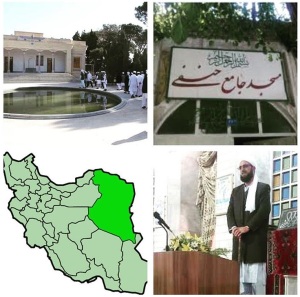
If there are any Iranian Sunni people more unknown (even to Iranians) than the Persian Sunni-Shafi’is (Lari/Khodmooni) of south Iran, then it is the Persian Sunni-Hanafi people of the Iranian Khorasan province. Perhaps, this is due to the widely-held (erroneous) belief that Iranian Sunnis are from ethnic groups other than the Persian one.

You must be logged in to post a comment.